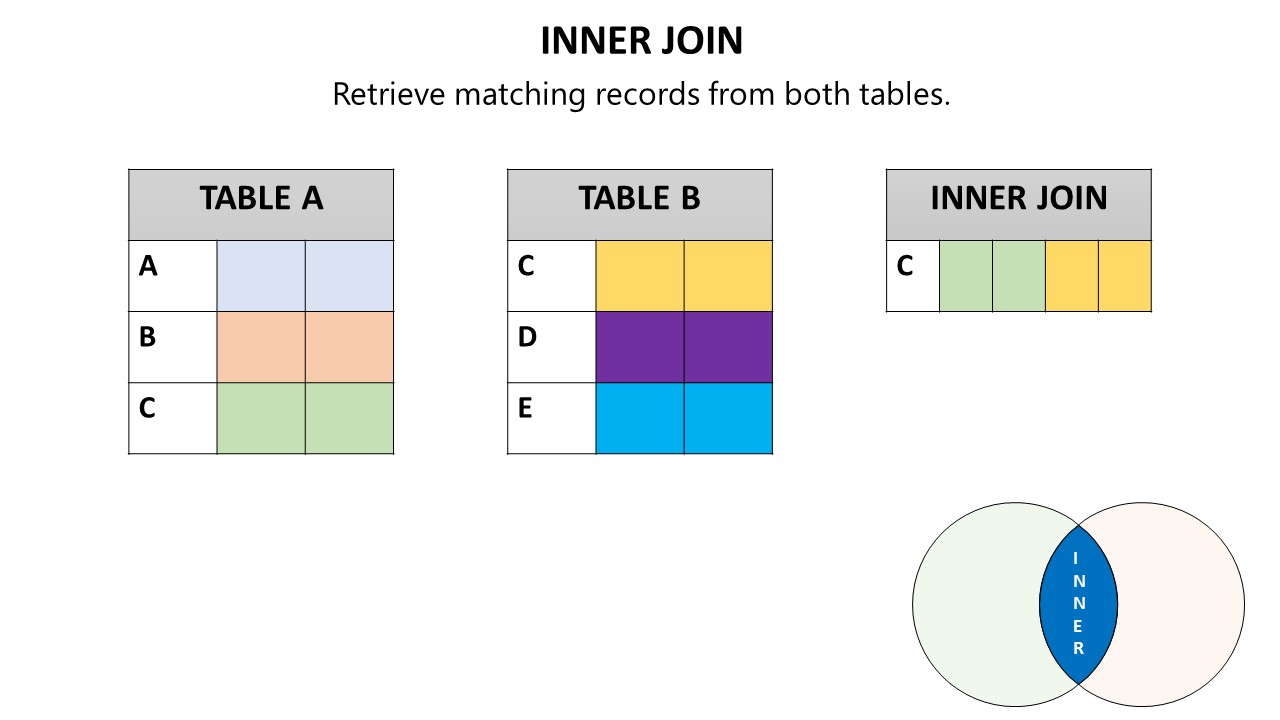SQL Joins: INNER, LEFT, RIGHT, FULL
As a data analyst, you’ll often encounter situations where you need to combine data from different tables. SQL joins are the tools that allow you to do just that. SQL joins are a fundamental concept for data analysts. Understanding SQL joins is essential for manipulating relational databases effectively and extracting meaningful information from disparate datasets. In this blog post, we'll explore the different types of SQL joins i.e. inner join, left join, right join, full join.
Why Learn SQL Joins?
SQL joins are like puzzle pieces that fit together to create a complete picture. Here’s why they matter:
- Data Integration: Combine related data from different tables.
- Holistic Insights: Uncover patterns and relationships across datasets.
- Efficient Queries: Optimize data retrieval by fetching only the necessary information.
Types of SQL Joins
1. INNER JOIN (or JOIN)
Purpose: Returns rows when there is at least one match in both tables based on the join condition. This is the most commonly used join.When to use: Use when you only want to retrieve rows that have matching values in both tables.
2. LEFT JOIN
Purpose: Keep all records from the left table and matched records from the right table.When to use: Use when you want to retrieve all rows from the left table regardless of whether there is a matching row in the right table. This is useful when you need to retrieve information even if there is no direct match in the related table.
3. RIGHT JOIN
Purpose: Similar to LEFT JOIN, but keeps all records from the right table.When to use: Less commonly used than LEFT JOIN, but can be used in situations where you want to retrieve all rows from the right table regardless of whether there is a matching row in the left table.
4. FULL JOIN
Purpose: Show all records from both tables.When to use: Use when you want to retrieve all rows from both tables, regardless of whether there is a match.
Conclusion
SQL joins enable data analysts to merge data from multiple tables in relational databases, facilitating complex queries and insights extraction. Understanding join types and syntax is crucial for effective data analysis, allowing for tasks like combining customer data with orders or joining product details with sales records. Mastering SQL joins empowers analysts to leverage relational databases fully, enhancing their analytical capabilities for informed decision-making across domains.







Comments
Post a Comment